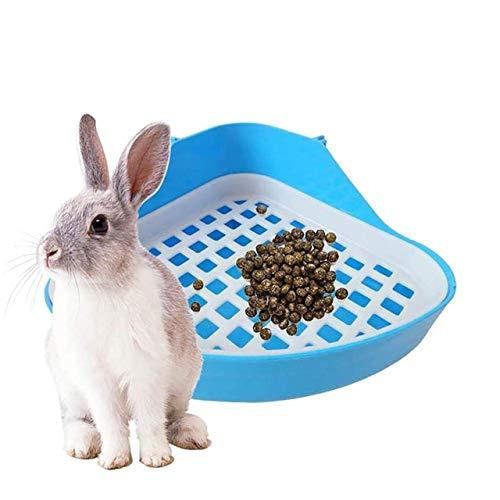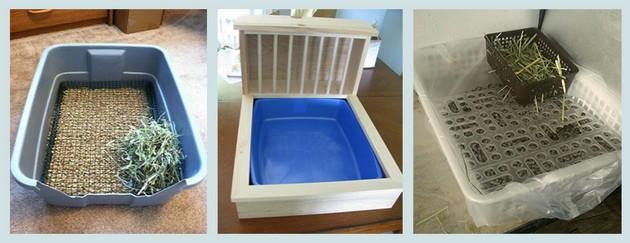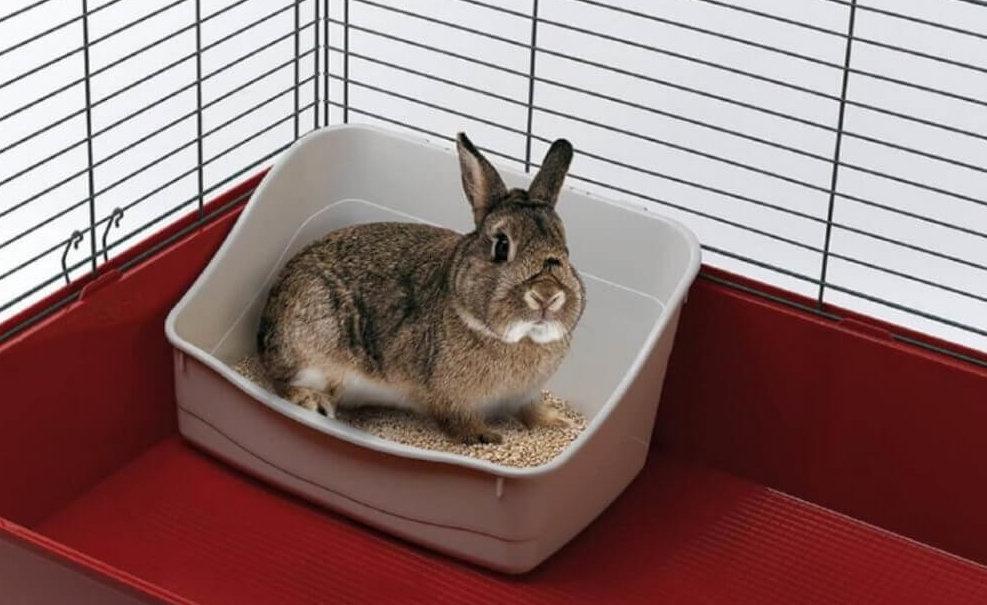How to train your rabbit to use the litter box at home and what not to do
Modern animal lovers are increasingly having rabbits as pets. These cute and intelligent animals are suitable for keeping in a living environment. Caring for them has its own characteristics, but it is no more difficult than caring for a dog. It is important to feed your pet on time and correctly, to keep its cage clean. Not all people know how you can train your rabbit to use the litter box to make cleaning behind it easier.
Suitable age for learning
You can train a decorative rabbit to the toilet from the moment it appears in the house. It is worth remembering that rabbits at 3-4 weeks, although they look independent, at this age they should not be taken away from their mother and develop toilet behavior in them. This is due to the fact that young animals of this age are very vulnerable. He can die from the slightest mistakes in care.
It is incredibly difficult to potty train an adult animal, almost impossible. Such rabbits have already developed a stereotype of behavior, and they will fulfill their physiological needs wherever they want. When choosing a pet for the house, it is better to opt for rabbits 45-60 days old. They develop new skills the fastest. It is easy to train animals to the toilet no older than 3-4 months.
Subtleties of choosing a tray and place
The formation of toilet behavior begins with the selection of a litter box and a place for it. These processes have their own characteristics.
Tray selection
Manufacturers currently offer trays to pet lovers in a wide variety of sizes, shapes and designs. When choosing a container for toilet needs, the following characteristics are taken into account:
- the material of the product must be safe for animals;
- it can be easily washed and disinfected;
- the size of the container must correspond to the size of an adult animal;
- the design of the product should not contain dangerous elements that could injure the animal.

Each rabbit tray shape has its own advantages:
- Triangular trays are conveniently placed in the corner of the cage. Very often they have special fasteners, which makes the structure more stable. Sometimes they are equipped with a special mesh. As a rule, such a tray has two corner edges higher than the one placed in front. This makes the toilet convenient for small individuals. Even a small rabbit can easily climb in through the low side. The disadvantage of a triangular tray is that it can only be conveniently placed in a corner.
- Rectangular trays are quite popular with rabbit lovers. They are very resilient. They can be conveniently placed anywhere in a cell or room. They have low sides, which makes them convenient for a rabbit to visit the toilet.
Given the fact that rabbit feces are quite caustic, you should not choose metal products for them. They oxidize rather quickly and become unusable.
The filler is of great importance. It is selected individually. It can be in granular form, sawdust or plain newsprint. The materials used in the cage as bedding should not be used to fill the tray.

Seat selection
When choosing a place to place the pot, you need to observe the animal for several days. As a rule, they relieve themselves in one place. The litter box is placed where the pet does it most often. In the conditions of the cage, most often one container is placed for rabbit needs. If the animal lives in a room or for a long time and often walks around it, then in this case, two toilets can be placed in convenient places.
Step by step instructions for toilet training
It is not difficult to potty train a rabbit living at home, but it will take patience and some time. When purchasing a bunny from a breeder, take a closer look at where he has a rabbit toilet. This will help in choosing the location for the litter box in your home. The following step-by-step instructions will make your actions correct:
- The acquired animal must be tamed. It should not be afraid of human hands and voices.
- Take a closer look at the places where the rabbit defecates most often. Place the tray or trays there.
- Place the containers for the toilet both in the cage and in the apartment in which the animal will walk.
- Once the rabbit is relieved, transfer a small amount of his excrement to the tray.
- Then put your pet in it.
- Repeat the technique several times. After several such landings, the rabbit will understand where to relieve himself.
- If the pet does not want to do its business in the tray, it should be encouraged with treats and affection after each successful case.

To prevent the dirty toilet from scaring off the animal, it needs to be cleaned once a day, but you should not do this right away. Rabbits sometimes eat droppings, which contain enzymes needed for digestion. A young animal will learn to potty faster if it is fed at the same time and the tray is placed not too far from the trough. After developing the necessary skill, the toilet can be moved further away.
If the animal walks around the room, it must be transplanted into the tray several times during the walk.
Forbidden tricks
Not all rabbits quickly become litter box. When the animal has done its business in the wrong place, you can talk to it in a strict tone, if it happened before your eyes. If a long time has passed between the incident and its discovery, then the conversation and screaming do not matter. The pet will not understand why he is being scolded, since rabbits have no association between sending natural needs past the pot and your dissatisfaction with his behavior. He may be frightened of a loud scream.
If the animal continues to relieve itself where necessary, it should not be poked into puddles and droppings. This will not lead to a positive outcome. The very last thing is to use physical force on the rabbit and beat him. This will intimidate the pet, cause a reciprocal aggression. In some cases, punishment can cause injury.

Why did the trained rabbit stop going to the tray?
One of the reasons for not going to the litter box lies in the animal's sexual behavior. Once a pet has matured, it is normal for a pet to be tempted to mark territory. This is especially true for uncastrated rabbits.If you do not plan to use the animal in breeding work, it is better to castrate it. A neutered rabbit very rarely marks its territory with urine or droppings, usually it is enough for it to rub its muzzle against objects for these purposes.
Sometimes other people visit your apartment as a cause of toilet behavior disorder. After such an event, the rabbit tries to sweep with its feces all the places where guests walked or sat. The introduction of a new animal, even if it's not a rabbit, can also provoke your pet to relieve itself everywhere, but not in the litter box.
Problems that may arise
Problems with toilet behavior can arise if the animal has changed its owner and / or place of residence. He needs time to get out of stress. When an animal is disturbed by parasites, diseases of the genitourinary and digestive system, then problems with toilet training can arise. In this case, it is advisable to show the rabbit to the veterinarian.









